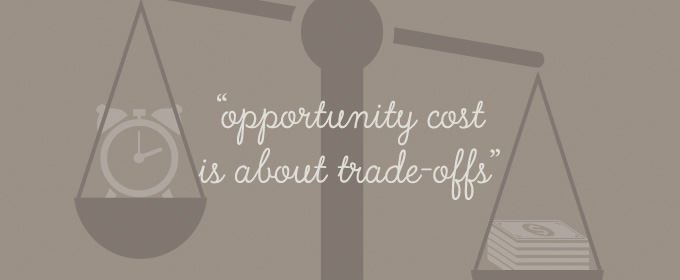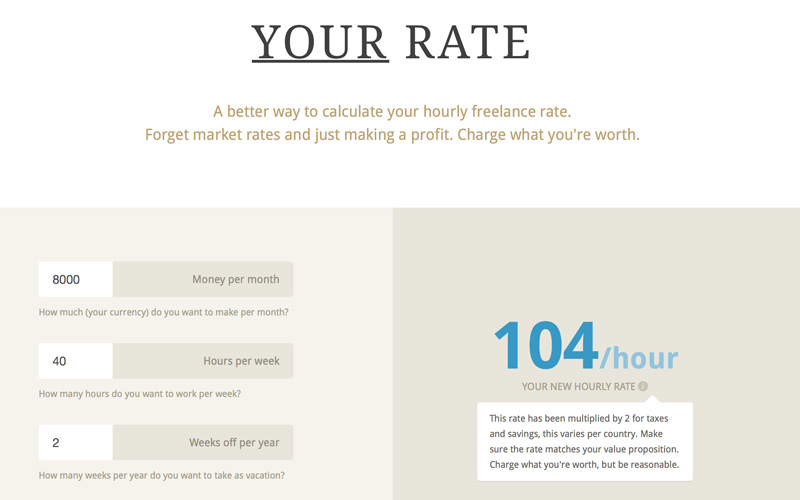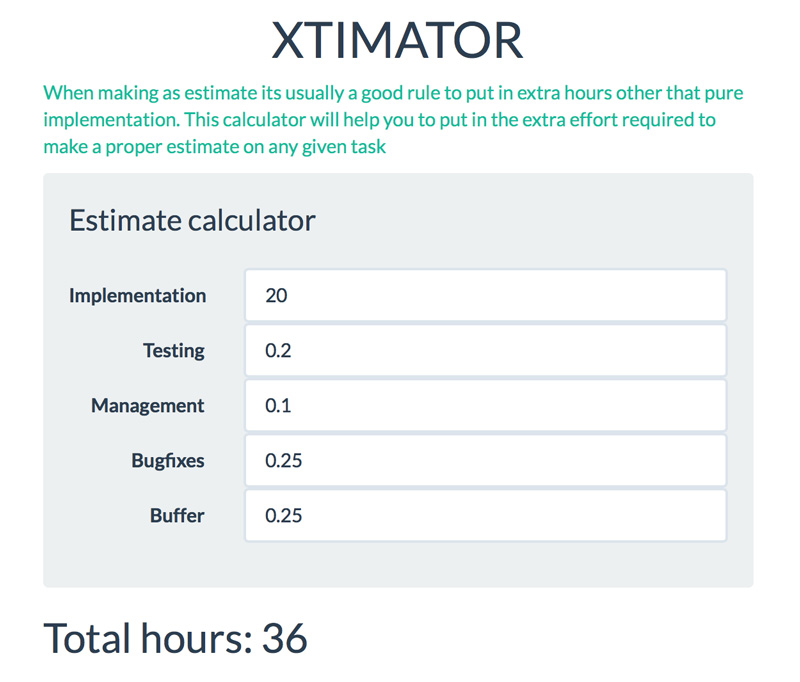If you’re anything like me, there are always a thousand projects rolling around in your head. I tend to float from one idea or project to the next and there are so many possibilities for what to do with my time that it’s difficult to decide what to work on. The concept of opportunity cost is a powerful one and can help you put hard reason and logic behind these difficult decisions.
What is Opportunity Cost?
Opportunity cost is an economic term that refers, quite simply, to the price of a missed opportunity—a benefit that could have been enjoyed if a particular action had not been taken. An opportunity cost is the value lost by choosing to pursue one course of action over a mutually exclusive alternative.
One example is lost payment from a client whose proposal has to be rejected because of a conflict of interest with a more lucrative alternative. It could also refer to less tangible benefits like less time spent commuting, relaxing/reducing stress levels, or a conservation of resources.
So What?
Opportunity cost is an important consideration for designers and can be applied to a number of different situations. While usually talked about in terms of money, it can also relate to time, labor, energy/output, or any other valuable resource.
All things considered, some projects end up costing more than they’re worth in terms of opportunity cost. Ultimately, opportunity cost is about “trade-offs.” As in all areas of life, when you make a choice, you reject the other options—at least for the time being. There’s always the chance that what’s been passed by could have been the better choice, or conversely, what you choose could prevent you from being available for unforeseen projects. Opportunity cost can really only be measured in hindsight; however, there are ways to minimize risk and maximize your positive results.
Estimating Jobs Wisely
When computing costs for an estimate or considering taking on a new project, always weigh how much of your time, energy and focus will be needed versus the potential profits. If a project is going to consume the majority of your resources and energy when there is the likelihood of easier and more enjoyable jobs coming through during the same time frame, it might be in your best interests to turn down the more difficult project.
As a freelance designer, you should train yourself to be open to passing on certain jobs in order to accept others. In light of opportunity costs and being a self-employed individual, you should weigh all of the relevant factors—not just money. Ask yourself, If I turn down a particular job, could I use my time in more fruitful ways? Might you be open to higher-paying clients—or nicer, more flexible clients that are less stressful to work for?
Job Estimation Tools
There are lots of tools out there to help you decide how much your time is worth. For example, Your Rate asks three simple questions about how much you’d like to make and work and spits out what you should charge hourly.
Xtimator, another great but simple tool, calculates how much extra time you should add to your initial setup quote to allow for tasks that you might not have considered, such as testing, management, and bug fixes.
Not Just Freelancers
This idea extends far past freelancers as well. If you’re in a 9-5 job, you have to consider the opportunity cost of not working on your own. Or if you’re working on a side project, you have to carefully weigh the cost of that time vs. other things that you could be pursuing with your limited hours.
Quality of Life Counts
Time and energy are highly valuable to self-employed designers and should be weighed into the equation no matter how much the job pays. The nature of the job, the disposition of the client and whether the work is fulfilling should all be considered.
Could you be spending more time with loved ones, commuting less or getting more much-needed rest if you decline a job? If you’re at a point in life where these things are more important to you than landing a “big fish” client, they should be factored in.
So, the next time you must decide whether to decline or accept a job, take a pause; consider the opportunity cost involved. Weigh the costs versus the benefits of every decision you make. While you can certainly make lists of pros and cons and crunch some numbers, ultimately you’ll know in your heart and gut the best course of action. Learn to cultivate and hone your intuition, and you’ll quickly become a master of opportunity cost calculation.
What Every Designer Should Know About Opportunity Cost



No comments:
Post a Comment
Note: Only a member of this blog may post a comment.